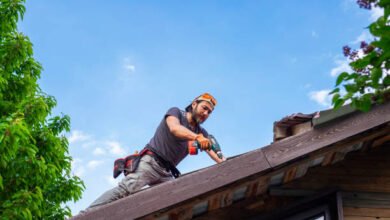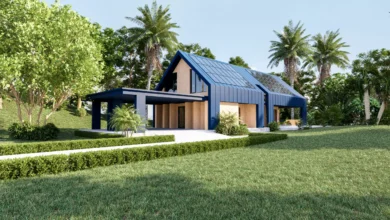Inside the Attic: How First Defense Insulation Transforms Houston Homes

Many homeowners overlook one of the most critical areas of the home when it comes to comfort, efficiency, and air quality: the attic. Often treated as a storage space or overlooked altogether, the attic plays a crucial role in determining how a home retains or loses energy. In a city like Houston, where temperature fluctuations can be extreme and humidity is a constant battle, attics become the frontline for maintaining a livable indoor environment.
We will explore how attics, when properly insulated and treated, can significantly improve a home’s energy efficiency, comfort levels, and even its longevity. With a focus on the real changes made by companies that understand Houston’s climate, we will explore how proper insulation and air sealing can truly transform a home from the top down, without requiring costly or invasive renovations.
Understanding the Attic’s Role in Home Efficiency
The attic is more than just the space above your ceiling. It acts as a thermal barrier—or at least it should—between the exterior environment and the living space below. In Houston, summers can bring punishing heat that lingers well into the evening. When attics are poorly insulated or lack effective air sealing, that heat seeps into the home, forcing HVAC systems to work longer and harder. This not only leads to inflated utility bills but also shortens the lifespan of heating and cooling equipment. Working with an experienced attic insulation contractor in Houston can help address these issues directly by evaluating the attic’s condition and installing insulation solutions tailored to the local climate.
On the other hand, during Houston’s cooler months, heat rises and escapes through uninsulated or leaky attics, resulting in inefficiency in both directions. Homeowners often blame their old HVAC system or windows, but more often than not, the attic is the actual culprit. When insulation is upgraded and airflow is managed correctly, homes immediately feel more balanced in temperature. This fundamental shift not only enhances comfort but also ensures the entire home operates with greater energy efficiency.
Solving Hidden Moisture and Airflow Problems
Humidity is one of Houston’s defining weather characteristics, and its effects can quietly damage homes over time. Improperly insulated attics can trap moisture or allow humid outdoor air to enter the home without being checked. This encourages mold growth, weakens structural components, and even affects indoor air quality. Many homeowners are unaware that their air quality issues start in the attic. A lack of air sealing allows pollutants, allergens, and even pests to enter living areas. Attic ventilation is another often-overlooked component; it’s not enough to simply have insulation if the attic can’t “breathe.” Effective attic upgrades consider both insulation and airflow in tandem.
The combination of sealing air leaks and ensuring balanced ventilation prevents moisture buildup, promoting a healthier living environment. This is especially critical in Houston, where seasonal storms can quickly lead to hidden condensation and moisture issues that are only discovered after damage has occurred. Prevention, in this case, always wins over costly repairs.
Targeted Solutions Designed for Houston Homes
Not all insulation approaches are created equal, especially when regional climate is a major factor. Houston homes face a distinct set of environmental challenges compared to those in the Midwest or Northeast. Attic upgrades in this region must be carefully selected. Fiberglass insulation may be enough for some climates, but Houston’s unique blend of heat and humidity makes spray foam or dense-pack cellulose more effective in many cases.
Companies like First Defense Insulation bring a focused understanding of what insulation materials perform best under these conditions and how to apply them with long-term performance in mind. Their work doesn’t stop with blowing in material—they evaluate the entire attic ecosystem, including air leakage points, ductwork exposure, and ventilation imbalances. This ensures that the upgrade is comprehensive, not just cosmetic. These tailored improvements transform uncomfortable, uneven homes into balanced, energy-efficient environments that can withstand Houston’s weather patterns without compromise.
Energy Savings That Speak for Themselves
Homeowners are often shocked at how quickly energy bills decrease after a proper attic retrofit. The difference is noticeable not only in the numbers but in the daily experience of the home. Rooms that used to feel stuffy or drafty begin to regulate their temperature. Air conditioning systems cycle less often, and heating during colder snaps becomes more consistent. These changes aren’t just minor upgrades—they are lifestyle improvements that add real value to a home.
Companies that approach attic work with long-term energy savings in mind understand how sealing even the smallest air gaps can lead to significant improvements in energy retention. Over time, these savings add up. A well-insulated attic often pays for itself through monthly utility reductions alone, not to mention increased comfort and reduced wear on HVAC systems. For homeowners planning to stay in their homes long-term, this is a sustainable upgrade with lasting financial returns and daily quality-of-life enhancements.
The attic may be out of sight, but its impact on daily life is far from hidden. In Houston’s challenging climate, addressing attic insulation and airflow can unlock significant benefits for improved comfort, enhanced energy savings, and increased long-term home value. Companies that understand the local environment, such as First Defense Insulation, provide more than just material installation—they bring strategies that account for the home’s unique needs.
By treating the attic as a central part of the home’s performance, homeowners can enjoy reduced bills, improved comfort, and healthier indoor air. It’s not just about trapping heat or blocking cold—it’s about creating a sealed, balanced environment that supports the entire structure. With thoughtful insulation work and air control, the attic becomes an asset rather than a liability, offering year-round advantages that continue to pay off long after the work is done.




